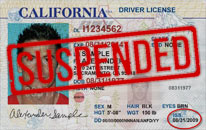While free speech is protected in the United States, criminal threats are not. California Penal Code 422 tells us that it is a crime to threaten or to use a threat to frighten others. Criminal threats carry hefty legal penalties.
What Does the Law Say About Criminal Threats?
In California, threats of violence, harm, or death are illegal. It is unlawful to say them, write them or send these threats electronically. Threats are made to intimidate a person. And this law protects the threatened person.
If the victim of a threat fears for their safety or that of their family, the threat is considered criminal. Even if the individual who threatens the victim does not intend to harm anyone, provoking fear is when their words become a crime. California Penal Code 422 is very clear about this.
Some Examples of Criminal Threats
Evoking a fear response by using threatening language is a criminal act, according to PC 422. Here are some examples of how this could take place:
- A man threatens to break the kneecaps of someone who owes him money when they leave work on payday if he does not pay his debt. The person being threatened is rightfully afraid since the specifics are there, and there is a promise of violence.
- A father is outraged that his son is benched and not allowed to play in his high school football game. He texts the coach and tells him he will bash his head if he does not play his son.
- A man is sleep deprived because his neighbor’s radio plays loudly late at night. He beats on their door and screams that he will beat up all of them if they do not turn it off immediately.
- Threats follow an employee’s firing. The employee is angry and threatens to run her former employer off the road if she sees her.
- A husband begins dating again after a divorce, and his ex-wife expresses anger and outrage by threatening to harm his new girlfriend when she catches her alone.
- Armed with a baseball bat, a man threatens the business owner next door to his own for infringing on his customer’s parking spaces. The presence of a weapon can further inflate the charge of such an interaction.
- Suppose a student is posting messages online threatening to blow up his school. This type of electronic threat could be interpreted as a genuine threat.
The common denominator in these situations is that the person on the receiving end of the threat takes it seriously and feels like actual harm could occur. These threats extend to the accusor’s family or people who have lived in their home for up to six months. The danger could envelop people who are immediate family or those related through mutual affinity.
When Is a Threat Not Considered Criminal?
If it is apparent to the person being threatened that the person making the threat is blowing off steam, it is not considered a crime. There is no fear that the threats will be carried out, so there is no crime. While threatening using words is a crime, reasonable discernment is essential too.
What Happens When You Are Convicted of a Penal Code 422 Crime?
The California court system may elect to charge the accused with a misdemeanor or a felony when a criminal threat occurs. Such menacing behavior is taken seriously. When a PC 422 law is broken, stiff penalties can follow, especially if accompanied by other charges.
Since criminal threatening is a “wobbler law,” the prosecution will decide whether the crime is a misdemeanor or a felony. That decision will be based on the circumstances of the case.
When convicted of a misdemeanor charge, the penalty allows for up to 364 days in jail and a fine of up to $1000. If the order is increased to a felony, the convicted party could face up to four years in state prison and fines of up to $10,000. If a weapon is involved, that could tack a year onto their sentence.
California’s Three-Strike Law Can Increase Fines and Sentences
California has a three-strike law. This type of conviction would be considered a strike. The resulting prison sentence could be doubled if it is a second strike. A third strike could lead to 25 years or life in prison.
Impact on Other Charges
When a PC 422 offense is paired with other violations, the seriousness of the crime and possible penalties increase; domestic abuse charges are often filed along with threatening criminal charges. Brandishing a weapon can lend more validity to a PC 422 charge and increase the potential for considerable fines and jail time.
Defenses for California Penal Code 422 Charges
If you are accused of making criminal threats, you will want legal help immediately. These serious charges can add credence to other charges and be stacked against you. Since the penalties are much less steep, you will need assistance convincing the prosecution to allow for a misdemeanor charge rather than a felony.
An experienced defense attorney will know how to interpret the evidence and build a powerful defense. Some possible defenses are:
- The victim was not afraid for their life or of injury to themselves or their family
- Perhaps the threat was unclear or vague and misinterpreted by the accuser
- There was not an immediate or future risk at stake
- The danger would not create fear in a rational person
Serious Threats Can Bring on Serious Consequences
Alone, a misdemeanor PC 422 charge is severe. But, when the charge is a felony, the penalty becomes much more problematic. If other charges are thrown into the mix, things can seem impossible.
If you are facing charges of making criminal threats, it will benefit you to call a Los Angeles DUI Attorney today. Start building a solid defense so you can have your case thrown out or plead to a less severe charge.
Your criminal defense attorney needs to study the evidence and mount the most vigorous defense for you. Penal Code 422 penalties can be devastating. An experienced attorney will understand how to clear your good name.







